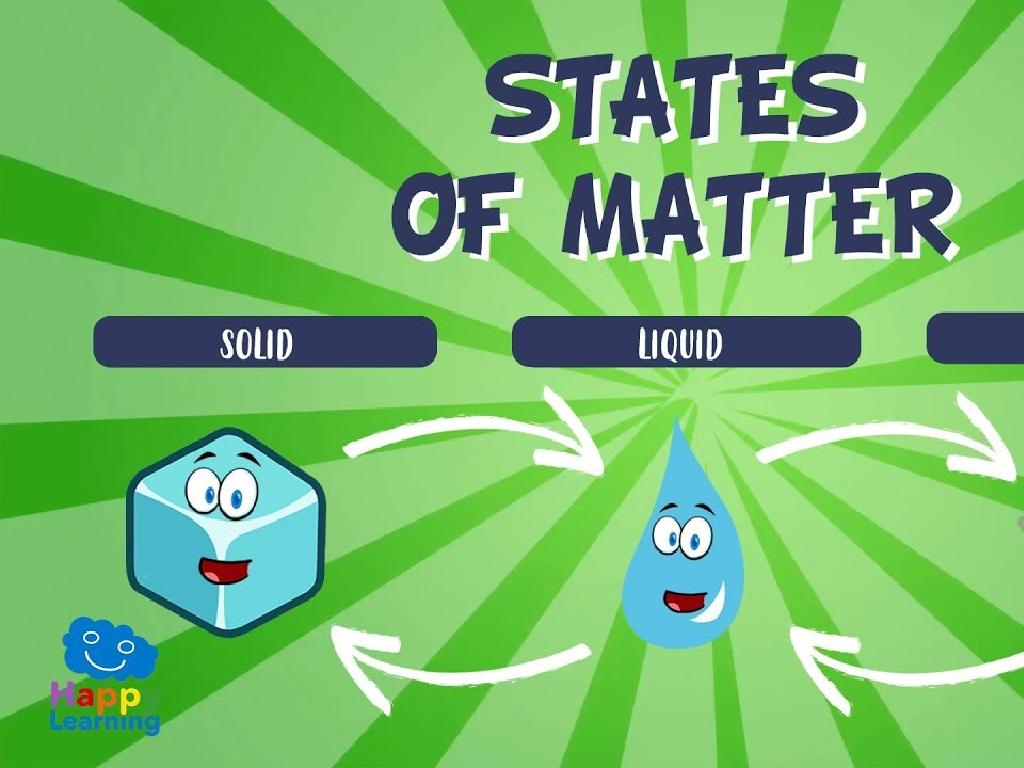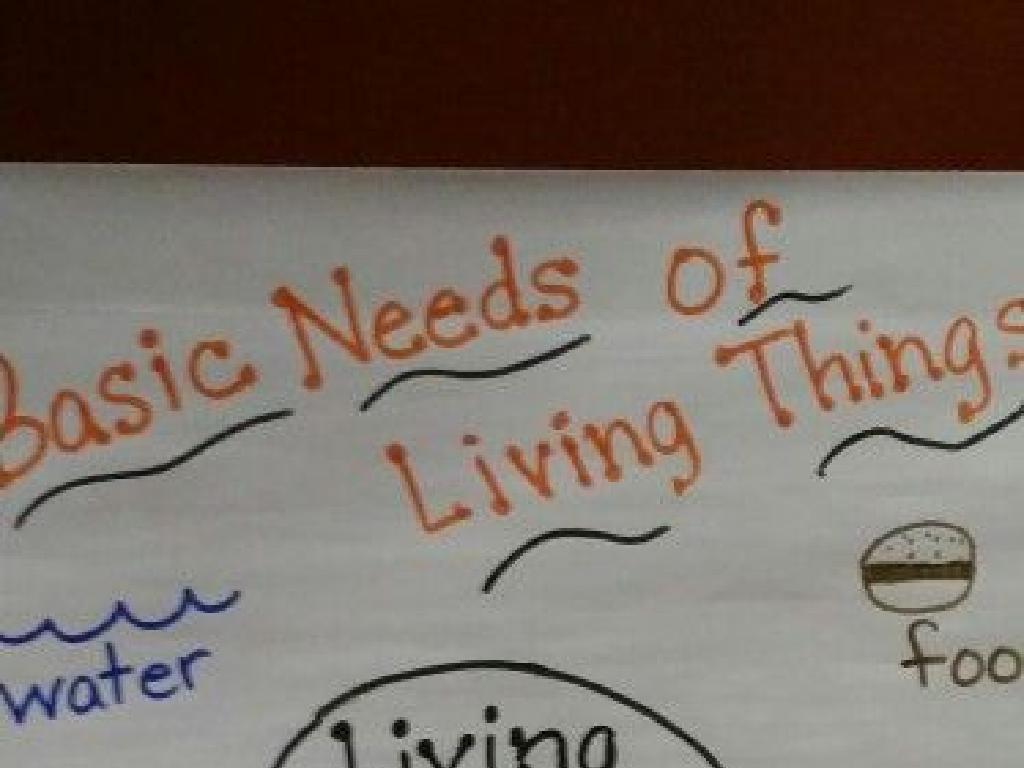Complete The Subtraction Sentence - Up To 18
Subject: Math
Grade: Second grade
Topic: Subtraction: One Digit
Summary: This second grade math lesson introduces subtraction using one-digit numbers up to 18. Students will learn key subtraction vocabulary, practice solving subtraction sentences, and use hands-on games like Subtraction Bingo to reinforce understanding. With interactive activities and visual aids, learners develop confidence in counting backwards, identifying minuends and subtrahends, and finding differences. The lesson supports real-world application and mastery of subtraction basics aligned with Common Core standards.
Please LOG IN to download the presentation. Access is available to registered users only.
View More Content
Welcome to Subtraction!
– Learning subtraction basics
– Subtraction means taking away
– If you have 18 apples and eat 3, you have 15 left.
– Examples: 18 – 3, 15 – 2, 14 – 6
– Practice with: 18 – 3 = ?, 15 – 2 = ?, 14 – 6 = ?
– Share what you know about subtraction
|
This slide introduces the concept of subtraction to second graders. Begin by explaining that subtraction is simply the process of taking one number away from another. Use relatable examples, such as apples, to illustrate this point. Encourage the students to think about times they have encountered subtraction in their daily lives and to share their experiences with the class. This will help them connect the concept to real-world situations. Provide a few simple subtraction problems using numbers up to 18 to give them a practical understanding of the concept. The goal is to ensure that students are comfortable with the idea of subtraction before moving on to solving problems.
Subtraction Vocabulary
– Minuend: Starting number
– The number you begin with in subtraction, e.g., in 15 – 7, 15 is the minuend.
– Subtrahend: Number taken away
– The number you subtract from the minuend, e.g., in 15 – 7, 7 is the subtrahend.
– Difference: The result of subtraction
– The answer you get, e.g., in 15 – 7, 8 is the difference.
|
This slide introduces the basic vocabulary of subtraction to second graders. The minuend is the number from which another number (the subtrahend) is subtracted. The difference is the result of this operation. Use simple examples to illustrate each term, ensuring that the numbers used do not exceed 18 to align with the lesson’s focus. Encourage students to use these terms when they explain how they solved subtraction problems. This will help them to communicate their mathematical thinking clearly.
Understanding Subtraction: Let’s Practice!
– Subtraction means taking away
– Example: 5 – 2 = ?
– If we start with 5 and take away 2, what’s left?
– Visualize with apples: 5 – 2
– Imagine having 5 apples and 2 are taken away
– We’re left with 3 apples!
– After taking 2 away, 3 remain
|
This slide is aimed at helping second graders understand the concept of subtraction by visualizing and solving a simple problem. Start by explaining that subtraction is the process of taking some away from a total. Use the example of 5 minus 2 to illustrate this point. Encourage the students to visualize the problem by imagining they have 5 apples and 2 are taken away, which leaves them with 3 apples. This concrete example helps them grasp the abstract concept of subtraction. Reinforce the idea by asking the students to use their fingers to count down from 5 to 3. The goal is for students to be able to complete similar subtraction sentences up to 18 by the end of the lesson.
Understanding Subtraction Sentences
– Subtraction sentence parts
– Minuend, subtrahend, difference
– Example: 8 – 3 = 5
– 8 is minuend, 3 is subtrahend, 5 is difference
– Fill in the blank: __ – 4 = 14
– What number minus 4 equals 14?
|
This slide introduces the components of a subtraction sentence to second-grade students. Begin by explaining that a subtraction sentence is made up of three parts: the minuend (the number we start with), the subtrahend (the number we subtract), and the difference (the result after subtraction). Use the example provided to illustrate these parts clearly. Then, engage the students with a fill-in-the-blank activity to apply their understanding. Ask them to find the missing minuend that would make the subtraction sentence true. This exercise helps reinforce their comprehension of subtraction and the relationship between the numbers in a subtraction sentence. Encourage students to use counting up or other strategies to find the answer. The correct answer for the blank is 18, as 18 – 4 equals 14.
Practice Time: Subtraction Sentences
– Try subtraction sentences on your own
– Count backwards to find the difference
– If the problem is 15 – 7, start at 15 and count back to 8
– We’ll solve the first few as a class
– Use number line for help if needed
– A number line can show you how many steps back you take
|
This slide is designed to engage students in active practice of subtraction sentences up to 18. Encourage them to use the strategy of counting backwards to find the difference between numbers. Begin the activity by solving a few examples together on the board to demonstrate the process. Provide a number line as a visual aid for students who may need additional support. For the independent practice, ensure that each student has a set of problems to work on. As they work, circulate the room to offer help and check for understanding. Possible activities for different students could include using manipulatives, drawing pictures to represent the subtraction, or creating their own subtraction sentences to challenge classmates.
Subtraction Games: Practice with Objects
– Let’s play a subtraction game!
– Use objects to find differences
– Objects like blocks or beads can represent numbers
– Work in pairs with counters
– Share and take turns to subtract
– Complete the subtraction sentences
– Fill in the blanks: 10 – ___ = 6. What goes in the blank?
|
This slide introduces a hands-on subtraction game designed to help second graders practice their subtraction skills up to 18. Provide students with physical counters like blocks or beads to represent the numbers they are working with. Encourage them to work in pairs to foster collaboration and peer learning. As they use the counters to subtract, they will visually see the concept of ‘taking away’ and find the difference. The teacher should circulate the room, offering guidance and ensuring that each pair is engaged in the activity. Possible variations of the game could include using different colored counters for different number values, setting up subtraction ‘stations’ with varying difficulties, or incorporating a timed challenge to add excitement.
Class Activity: Subtraction Bingo
– Let’s play Subtraction Bingo!
– Complete subtraction sentences
– Use numbers up to 18 to find the difference
– Mark the difference on your card
– If your subtraction answer is 4, cover the number 4 on your card
– Aim for five in a row to win!
|
This interactive game is designed to help second graders practice their subtraction skills in a fun and engaging way. Prepare bingo cards with numbers up to 18 in advance. During the game, call out subtraction problems for the students to solve. When a student finds the answer, they should mark it on their bingo card. The goal is to get five correct answers in a row, horizontally, vertically, or diagonally. Possible variations of the activity could include playing in pairs, using different bingo patterns, or having a ‘full card’ game where the goal is to cover all numbers. This activity reinforces mental math and the concept of subtraction up to 18.
Subtraction Review and Homework
– Celebrate today’s subtraction success
– Homework: subtraction worksheet
– Find differences for numbers up to 18
– Practice each problem carefully
– Take your time to subtract correctly
– Aim for perfection through practice
|
Today’s class focused on mastering subtraction with numbers up to 18. As a review, congratulate the students on their hard work and progress. For homework, assign a worksheet that reinforces today’s lesson, ensuring they understand how to complete subtraction problems accurately. Emphasize the importance of practice in becoming proficient at subtraction. In the next class, review the homework to address any difficulties and celebrate their efforts towards perfecting their subtraction skills.





